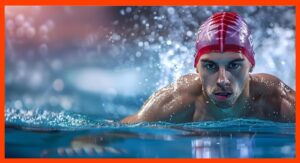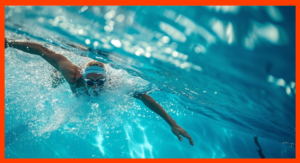Adult Swimming Tips: Your Complete Guide By Mirror Eternally

Swimming isn’t just for kids. It’s a fantastic activity for adults of all ages and fitness levels. Whether you’re looking to beat the sweltering Singapore heat, improve your overall health, or simply unwind after a long day, swimming offers a wealth of benefits. This comprehensive guide will equip you with everything you need to jump in and start making waves!
Finding the Right Swimming Pool in Singapore
Finding the perfect pool can make all the difference in your swimming experience. Singapore offers a variety of options to suit your needs and budget:
- Public Pools: These clean and well-maintained pools are a readily available and affordable choice. Many neighborhoods have public pools within walking distance, making them ideal for a quick dip or a casual swim workout.
- Condominium Pools: If you live in a condominium, chances are you have access to a pool right at your doorstep. These pools often have a more relaxed atmosphere compared to public pools.=
- Private Clubs: For those seeking a luxurious experience, private clubs offer additional amenities like fitness centers, swim-up bars, and dedicated lap lanes. Many private clubs also have professional instructors on staff who can offer personalized guidance.
Essential Swimming Gear for Adult Beginners
Investing in proper swimming gear will enhance your comfort, safety, and enjoyment in the pool. Here’s a list of must-have items:
- Swimwear: Opt for chlorine-resistant swimwear that fits snugly but allows for ease of movement. Look for styles with built-in sun protection (UPF 50+) for added defense against Singapore’s strong sun.
- Goggles: Choose goggles that fit comfortably around your eyes and nose to prevent water leakage. Consider tinted lenses if you’ll be swimming outdoors to reduce glare.
- Swim Cap: A swim cap keeps your hair out of your face, reducing drag and improving streamlining in the water.
Overcoming the Fear of Water and Building Confidence
Fear of water is a common obstacle for adult beginners. Don’t worry, overcoming this fear is achievable with gradual exposure and positive reinforcement. Here are some tips:
- Start Shallow: Begin by simply wading into the shallow end of the pool. Get comfortable submerging yourself and practice blowing bubbles underwater.
- Buddy Up: Having a supportive friend or family member by your side can significantly boost your confidence. Look for adult swim lesson plans offered by local pools or swim schools.
- Small Wins: Celebrate your progress, no matter how small. Mastering basic skills like putting your face in the water or floating on your back are significant milestones.
Learning Basic Swimming Techniques and Strokes
Once you’ve overcome your initial apprehension, it’s time to start learning basic swimming strokes. Here’s a step-by-step breakdown of three popular strokes:
Freestyle (Front Crawl):
- Body Position: Lie face down with your body streamlined and head down. Extend your arms out in front with palms facing down.
- Arm Stroke: Alternate reaching one arm forward and pulling it back through the water while keeping your elbow high.
- Leg Kick: Maintain a continuous flutter kick by scissoring your legs up and down from the hips.
- Breathing: Turn your head to the side and exhale underwater as you pull your arm. Inhale quickly as your head turns back to the front for another stroke cycle.
Backstroke:
- Body Position: Lie on your back with your body straight and head resting comfortably on the water. Extend your arms overhead.
- Arm Stroke: Simultaneously sweep your arms back from your sides to your hips in a windmill motion.
- Leg Kick: Maintain a continuous flutter kick, similar to freestyle.
- Breathing: Keep your head back and breathe continuously as you rotate your head to the side to take a breath.
Breaststroke:
- Body Position: Lie on your front with your knees bent and feet together.
- Arm Stroke: Bring your arms together in front of your chest and then outwards in a semi-circular motion.
- Leg Kick: Simultaneously frog kick by bringing your heels together and pushing outwards, followed by pulling your knees towards your chest.
- Breathing: Lift your head out of the water to inhale as you complete the arm stroke. Exhale underwater as you bring your arms together.
Step by Step Swimming Lessons for Adults
While the above provides a basic overview, consider enrolling in adult swim lesson plans offered by numerous swim schools in Singapore. These structured programs provide personalized instruction from qualified coaches, ensuring proper technique and safety.
Swimming Lessons for Senior Citizens Singapore
The good news is, it’s never too late to learn how to swim! Many swim schools in Singapore cater specifically to senior citizens, offering programs designed for their needs and abilities. These programs typically focus on:
- Water Safety: Building confidence and comfort in the water through gentle exercises and familiarization with pool environments.
- Basic Skills Development: Learning fundamental skills like floating, kicking, and basic arm strokes in a safe and supportive environment.
- Low-Impact Fitness: Utilizing water’s natural resistance for gentle exercise routines that improve flexibility, strength, and balance.
Benefits of Swimming Lessons for Seniors:
- Improved Physical Health: Swimming is a fantastic low-impact exercise that promotes cardiovascular health, joint mobility, and muscle strength. This can lead to increased stamina, better balance, and a reduced risk of falls.
- Enhanced Mental Wellbeing: The rhythmic and calming nature of swimming can reduce stress and anxiety, while also promoting feelings of accomplishment and self-confidence.
- Socialization and Fun: Group swimming lessons can be a great way for seniors to meet new people, share experiences, and enjoy a fun and social activity.
Finding Adult Swim Lesson Programs:
Here are some resources to help you find adult swim lesson programs in Singapore:
- Singapore Swimming Association (SSA): The SSA website lists various swim schools and coaches offering adult programs.
- Public Pool Websites: Many public pools in Singapore offer adult swimming lessons. Check their websites or contact them directly for details.
- Community Centers (CCs): Some CCs offer affordable swimming lessons for residents, including programs specifically for seniors.
Building Stamina and Endurance in the Water
As your confidence and skills improve, you can focus on building stamina and endurance in the water. Here are some effective strategies:
- Gradual Increase: Start with shorter swim distances and gradually increase the duration and intensity of your workouts over time.
- Interval Training: Alternate between swimming laps at a moderate pace with short rest periods. This helps improve your cardiovascular fitness and swimming efficiency.
- Cross-Training: Incorporate other activities like walking, cycling, or yoga into your routine to build overall fitness, which translates to improved swimming performance.
Incorporating Warm-Up and Cool-Down Routines
Proper warm-up and cool-down routines are essential for preventing injuries and maximizing your swimming experience.
- Warm-Up: Before entering the pool, perform light cardio exercises like jumping jacks, arm circles, and dynamic stretches to prepare your muscles for movement.
- Cool-Down: After your swim, spend a few minutes on static stretches like shoulder rolls, leg extensions, and hamstring stretches to improve flexibility and prevent muscle soreness.
Joining Swimming Classes and Groups for Motivation
Staying motivated can be a challenge, especially when starting a new activity. Here’s how joining swimming classes and groups can help:
- Expert Guidance: Qualified instructors can provide personalized feedback, correct your technique, and ensure you’re swimming safely and efficiently.
- Accountability: Committing to group classes keeps you accountable and encourages you to stick with your swimming goals.
- Social Interaction: Swimming with others can make the experience more enjoyable and help you build new friendships.
Healthy Nutrition and Hydration Tips for Swimmers
Maintaining proper nutrition and hydration is crucial for optimal performance and recovery during swimming. Here are some tips:
- Pre-Swim: Eat a light and easily digestible meal or snack rich in complex carbohydrates and protein about 1-2 hours before swimming.
- Hydration: Drink plenty of water throughout the day, especially before, during, and after your swim.
- Post-Swim: Replenish lost electrolytes with a sports drink or coconut water after your swim. Consider a light meal with protein and carbohydrates to aid muscle recovery.
Tracking Your Progress and Setting Realistic Goals
Monitoring your progress keeps you motivated and allows you to celebrate your achievements. There are many tools and apps available to track your swim distance, time, and calories burned.
Set realistic and achievable goals to ensure continued motivation. Start with smaller goals and gradually increase the difficulty as you progress.
Preventing and Managing Common Swimming Injuries
Swimming is a low-impact exercise, but some overuse injuries can occur if proper technique isn’t used. Here are some tips for prevention:
- Maintaining Good Form: Focus on proper body position, breathing techniques, and efficient strokes to minimize stress on your joints.
- Warm-Up and Cool-Down: As mentioned earlier, proper warm-up and cool-down routines help prepare your body for activity and prevent post-swim soreness.
- Listen to Your Body: Don’t push yourself too hard, especially when starting out. Take rest days when needed and pay attention to any pain or discomfort.
Common Swimming Injuries:
- Rotator Cuff Injuries: These can occur due to improper shoulder positioning during strokes like freestyle and backstroke. Focusing on proper arm rotation and avoiding overreaching can help prevent these injuries.
- Shin Splints: Caused by repetitive kicking, shin splints can be avoided by maintaining proper kicking technique and gradually increasing the intensity of your workouts.
- Neck Strain: Holding your head high while swimming can strain your neck muscles. Practice proper head position, especially during backstroke, and consider using a pull buoy for drills that isolate your arms and core.
Managing Minor Injuries:
If you experience minor pain or discomfort after swimming, follow the RICE method:
- Rest: Avoid strenuous activity for a few days.
- Ice: Apply ice packs to the affected area for 15-20 minutes at a time, several times a day. Wrap the ice pack in a thin towel to prevent skin irritation.
- Compression: Use a compression bandage to reduce swelling.
- Elevation: Elevate the injured area above your heart to reduce swelling.
Seeking Professional Help:
If the pain persists or worsens, consult a doctor or physiotherapist. They can diagnose the injury and recommend appropriate treatment options.
Making Swimming a Fun and Enjoyable Part of Your Routine
Swimming shouldn’t feel like a chore! Here are some ways to keep it interesting and engaging:
- Mix it Up: Experiment with different strokes and drills to challenge yourself and prevent boredom.
- Incorporate Fun Activities: Play water games with friends or family, join a synchronized swimming class, or try aqua aerobics for a change-up.
- Explore Different Locations: Take advantage of Singapore’s beautiful beaches and scenic pools for a refreshing outdoor swim experience.
Exploring Singapore’s Scenic Swim Spots and Beaches
Singapore boasts a variety of stunning locations perfect for a refreshing dip. Here are a few suggestions:
- East Coast Park: This popular beach park offers calm waters, designated swimming zones, and plenty of amenities.
- Sentosa Island: From the luxurious beaches of Tanjong Beach Club to the family-friendly Palawan Beach, Sentosa offers a variety of swimming options.
- Lazarus Island: This car-free island boasts pristine beaches and clear waters, perfect for a tranquil escape.
Safety Tips for Swimming in Open Water:
- Always Swim with a Buddy: Never swim alone in open water, especially if you’re new to outdoor swimming.
- Be Aware of Currents and Tides: Research the area beforehand and be mindful of any currents or tides that could affect you.
- Swim Within Designated Areas: Stick to designated swimming zones with lifeguard supervision.
- Use Sunscreen and a Swim Cap: Protect your skin from the sun and wear a swim cap to prevent heatstroke.
Conclusion
Swimming is a fantastic activity that offers a wealth of benefits for adults of all ages. By following the tips in this guide, you can overcome any apprehensions, learn proper technique, and start enjoying the refreshing and rewarding world of swimming. So, what are you waiting for? Dive in and discover the joy of swimming in Singapore!
| Category | Benefit |
| Physical Health | Improves cardiovascular health |
| Physical Health | Builds muscle strength and endurance |
| Physical Health | Increases flexibility and range of motion |
| Physical Health | Low-impact exercise, gentle on joints |
| Mental Wellbeing | Reduces stress and anxiety |
| Mental Wellbeing | Promotes feelings of accomplishment and self-confidence |
| Socialization | Fun and social activity, a great way to meet new people |
You can also read – Hotel with rooftop bar Kuala Lumpur








